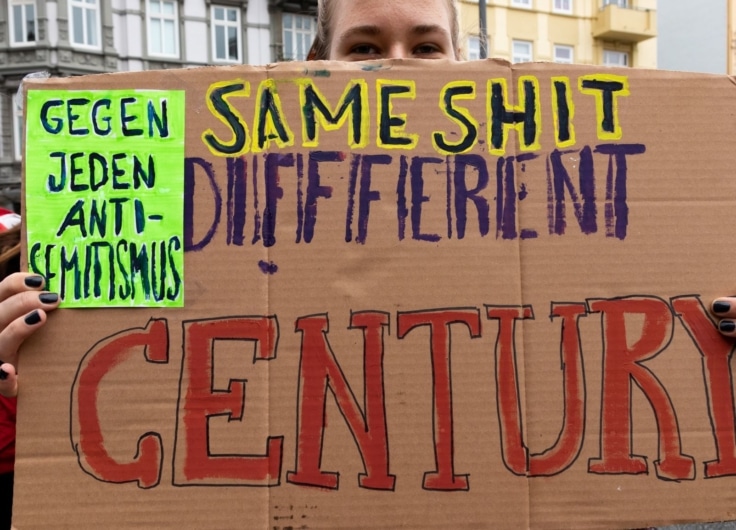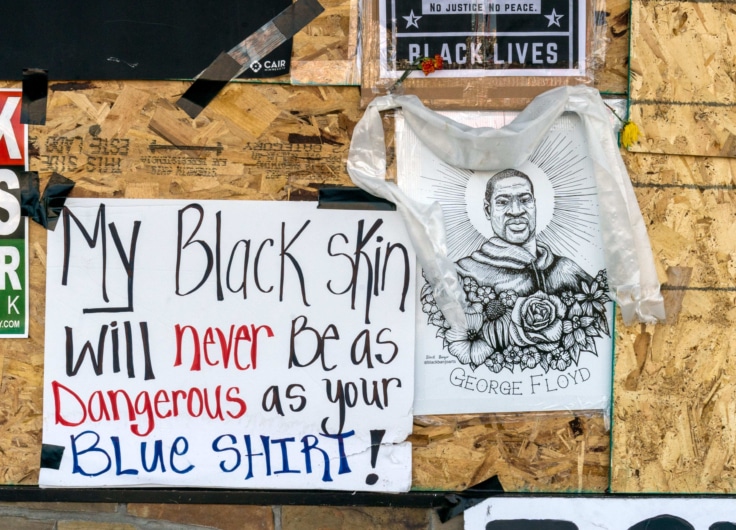How the Far Right Recognizes Itself in the Return of the Wolf
In the Low Countries, the wolf is no longer a fairy-tale figure who terrorizes goats and piglets. The return of the grey hunter is accompanied by a blaze of controversy. But one group is an unconditional fan: the far right. They see in the predator their ideal society – faithful and caring for the pack, ferocious and ruthless to everything else.
“Lions and tigers may be more powerful, but wolves do not perform in the circus.” These are the words of a young woman who is a member of the Flemish far-right youth organization Schild & Vrienden (Shield and Friends, S&V). She leads a life outside the glare of the media but is usually present at S&V meetings. The young lady is alluding to the proverbial indomitable lion, but who turns out to follow orders for the amusement of man, without a roar. Come and see, have a look, the circus is about to begin. “But not with a wolf, because they won’t be able to tame him.”
The far right is keen on the wolf. More so than on the lion, certainly in more obscure circles. The feel-good factor of both animals is well below freezing point. But that doesn’t matter, because the far right is not looking for a cuddly image, and certainly not when it comes to the wolf, as history shows. Hitler used the codename wolf and referred to the SS as wolf pack. The wolf trap was the badge of several SS battalions and the Wolf’s Den (Wolfsschanze) was one of the Führer’s headquarters. Examples of far-right wolf mania abound.
Patriarchal and hypermasculine
The wolf is also the faithful friend of Odin, the Scandinavian god who is the model for the pure blood of Germanic peoples. The far right greedily roots into the symbolism of paganism or, say, the runes of the Vikings. At the same time, they sow confusion about the political orientation of these subcultures. They become, as it were, guilty by association: suspected in advance of far-right sympathies.
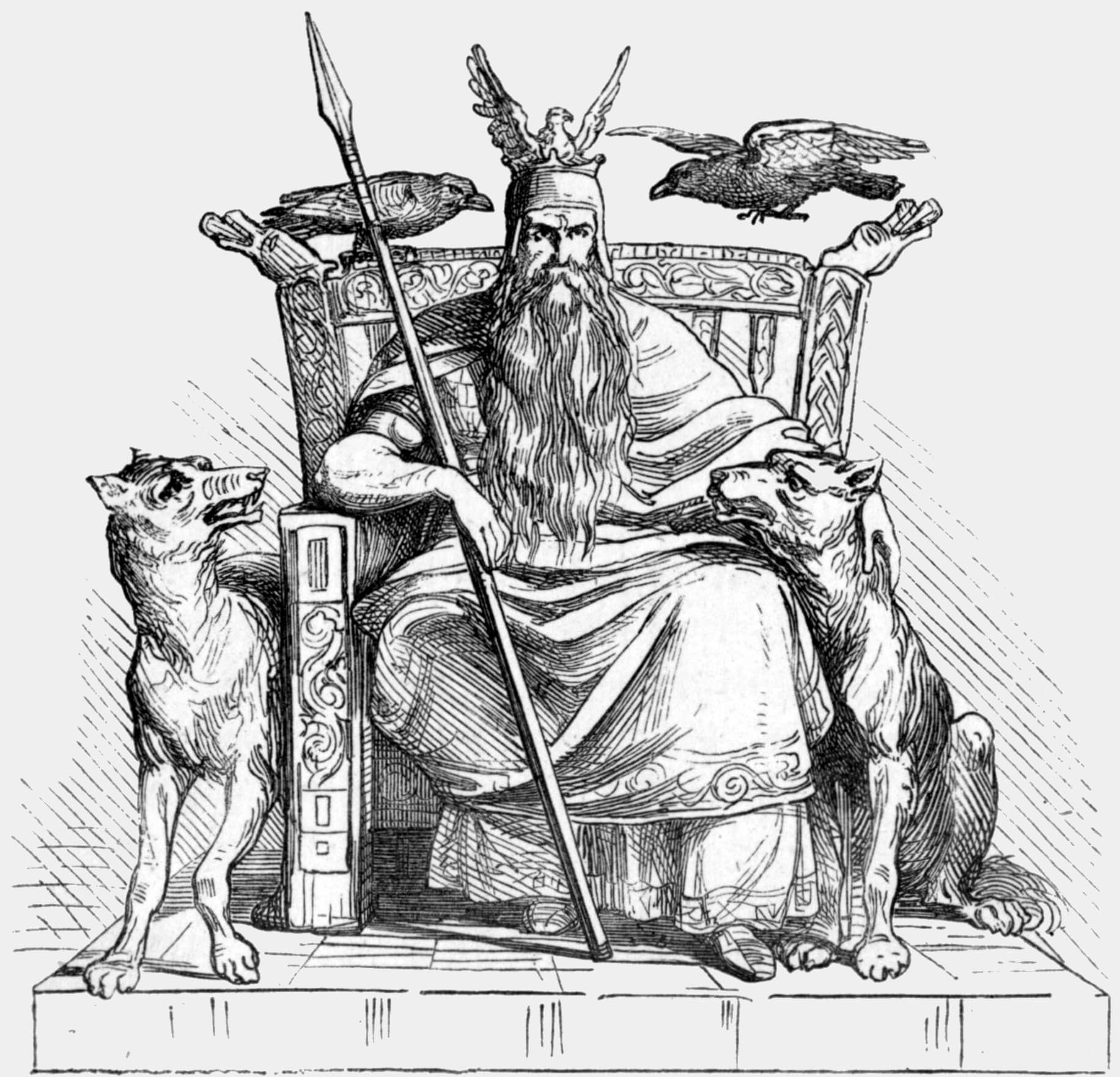 The wolf is the faithful friend of Odin, the Scandinavian god who is the model for the pure blood of Germanic peoples.
The wolf is the faithful friend of Odin, the Scandinavian god who is the model for the pure blood of Germanic peoples.© Wikimedia Commons
Roman wolf iconography also serves as a grateful source of inspiration. Think of the outcast twins Romulus and Remus, who are found and suckled by a she-wolf. The far right appropriates elements of classical antiquity to idolize a patriarchal society. And that also resonates in the music scene. Metal music bands like Hesperia, who label themselves as Roman Black metal, use the wolf as a heraldic animal, although the blazon is a bit flimsy: a dark cotton T-shirt or some stylized drawings on promotional material.
In an article about wolves, metal and the (extreme) right, the American classicist Jeremy Swist writes: “Like their fascist predecessors, they give both the wolf and ancient Mediterranean civilizations a patriarchal and racist twist. Such constructions flow from the resonances of both wolves and classical antiquity, mixed with the common themes of metal: transgression, hypermasculinity, elitism and nostalgia for premodernity.”
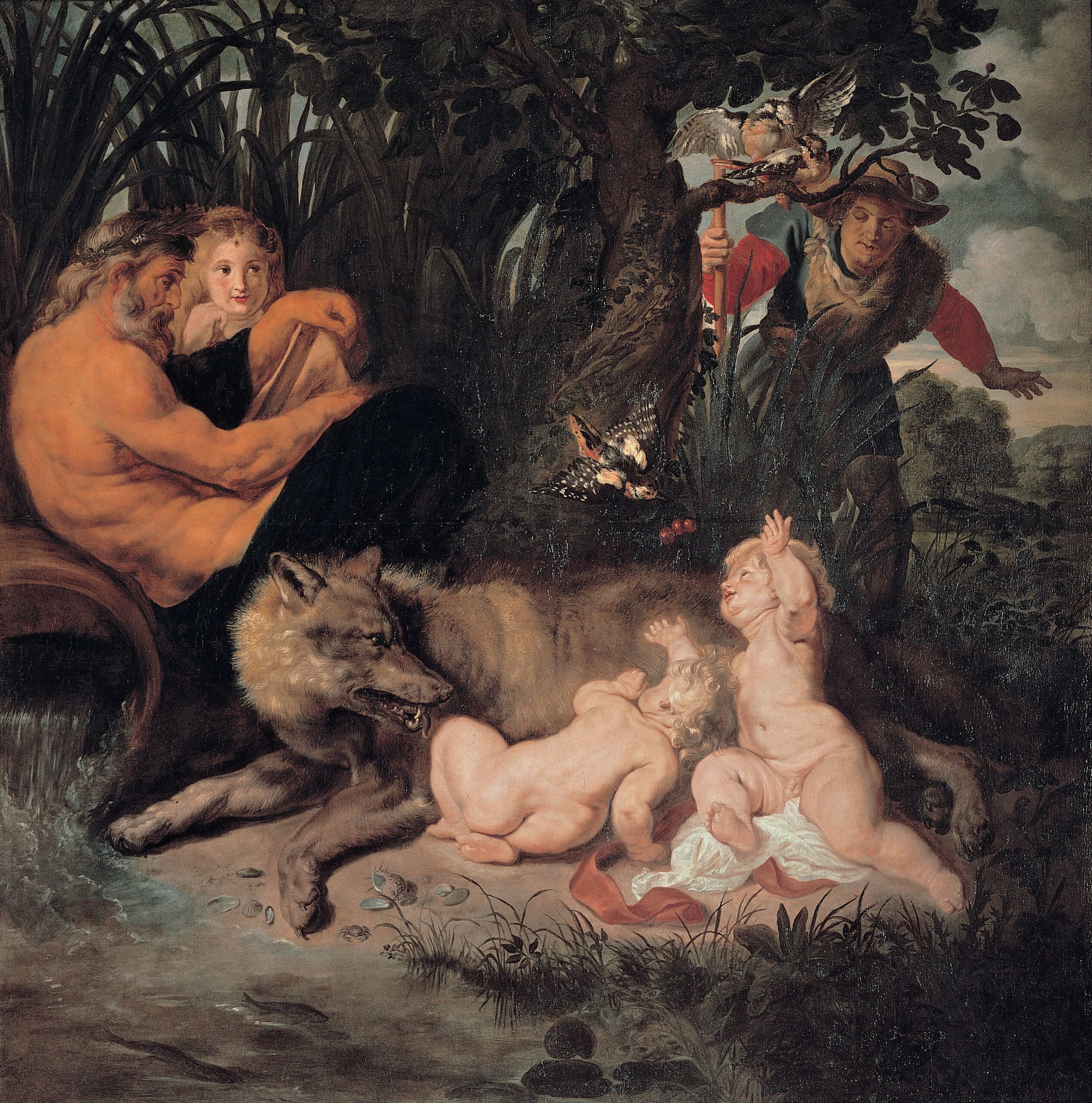 Peter Paul Rubens, Romulus and Remus, ca 1613, Capitoline Museums, Rome. The far right appropriates elements of classical antiquity to idolize a patriarchal society.
Peter Paul Rubens, Romulus and Remus, ca 1613, Capitoline Museums, Rome. The far right appropriates elements of classical antiquity to idolize a patriarchal society.© Google Art Project
The “natural” order must be restored. That’s the belief, and then the wolf rushes to the rescue. This is also evident from Canadian professor Stephanie Rutherford‘s research into the iconography of the wolf among white nationalists. “The Nazis took the wolf as a model for the qualities they sought to cultivate; loyalty, hierarchy, savageness, courage, obedience, and sometimes cruelty,” she writes. According to Rutherford, wolf symbols have a radical appeal to sections of the alt-right that see the genesis and evolution of these symbols as codes to be cracked. “Their language is laced with references to the wolf, and their identity formation longs for a certain freedom, separate from the mainstream in society,” Rutherford says.
The “natural” order must be restored. That's the belief, and then the wolf rushes to the rescue
Rutherford’s research focuses on two specific cult groups in the white supremacy movement, La Meute in Canada and the American The Wolves of Vinland. The latter is a neopagan group that admits only white members because it sees racial purity as essential to the unity of the tribe. Brotherhood is the ideal, and it is reinforced under the impetus of American influencer Jack Donovan, who promotes male supremacy as an antidote to feminism and weakness. The Wolves of Vinland also have a women’s branch called Project Shewolf.
“The Wolves of Vinland and La Meute see themselves as the only ones brave enough to face the truth. Everyone else is considered sheep, domesticated in mindlessly swallowing the pasture grass consisting of multiculturalism and feminism. And then the wolf emerges as the ideal symbol for new kinds of nationalism and tribalism,” Rutherford writes. A species that rails against political correctness and, as the Canadian researcher writes, against invasive globalization.
“Any more wolves going?”
The pariah you can’t control, that’s the wolf that the far right mirrors. Like the animal, the movement does not want to fall in line. That contrarianism thrives pre-eminently online, in deep virtual recesses of all kinds of social platforms. On Facebook, for example, there is the closed group She-Wolves, exclusively for far-right women from the Low Countries. Their ranks include genuine aficionadas of Geert Wilders’ Dutch Party for Freedom (PVV) and his even more extreme counterpart Thierry Baudet of the Forum for Democracy (FvD), as well as supporters and representatives of Vlaams Belang
(Flemish Interest). Barbara Pas, leader of the Vlaams Belang parliamentary group, was also a wolf.
The pariah you can't control, that's the wolf that the far right mirrors
She-Wolves has since been partly incorporated into the Project Thule association. Its founder is the ex-soldier, Tomas Boutens. He was previously convicted for his plans to carry out an armed coup with the neo-Nazi group Bloed Bodem Eer Trouw (BBET). (Blood, Soil, Honour and Loyalty). Project Thule plays even more on the alleged loss of white identity of the wolves among their group members. In its place is ethnic tribalism: a pack within a population that shares a deep camaraderie. There is therefore a great sense of solidarity among the she-wolfs, a sisterly bond exclusively for putting “own” people first.
In the run-up to the 2019 national elections, She-Wolves’ membership figures rose sharply, and they participated in Vlaams Belang’s electoral campaign. They send invitations to go to election events together. “Tonight, steak fest Vlaams Belang Gent. I’m going to be there. Any more wolves going?” Sanne Plancke, former municipal councillor of Forza Ninove, shared an overview of female election candidates. “Any East Flemish candidates among the wolves?”
Apart from active campaigning, the tenor of the shared messages is whimpering, doom is imminent. The victimhood card is played to the hilt: Flanders and the Netherlands suffer from migration and capitalism. Both phenomena give birth to alienation: that is the firm conviction of those far-right virtual members. They even fear the whole of Europe is under threat to the very core of its being. Parasitized, as it were, by multiculturalism.
Angry and wild
The far-right biotopes feel vulnerable but do not want to become prey. On the contrary, they identify with a top predator that may be vulnerable but is by no means a lap dog. He is also not a soloist but even more of a team player who conforms to a strict hierarchy. To top it all off, the wolf, not unimportantly, is of indigenous origin. A homegrown beast. Not a whiff of exotic odium to be found like with the king of the jungle dwelling on African and Asian soil. In the end, the lion failed to escape Disneyfication. Tamed and christened into animated characters named Simba and Aslan (from The Lion King), that predator who roars has had its claws clipped.
The wolf, not unimportantly, is of indigenous origin. A homegrown beast.
The wolf, on the other hand, is always angry and wild. And he’s back. Had he long been deemed extinct due to spatial densification, economic activity and hunting pressure, the grey-haired man has recently been working on his comeback. “In the summer of 2011, wolves set foot again on both Belgian and Dutch soil, and that after an absence of more than a century”, according to the website Welkomwolf.be of the non-profit nature association Landschap vzw.
This return goes hand in hand with polarisation, the debate for or against the wolves erupts from flashfire to flashfire. In the autumn of 2022 Flemish newspaper Het Laatste Nieuws reported: “Wolves wreaked havoc in the Lierstraat in Meeuwen, in the night from Monday to Tuesday killing eleven sheep and four alpacas.” And after one or more young wolves had come too close to people in De Hoge Veluwe national forest, the question arose what to do: chase them away or kill them? Dutch Minister of Nature and Nitrogen Christianne van der Wal (VVD) stated she would like to seek advice as to how humans and wolves should co-exist in the Netherlands. In doing so, she wants to begin a dialogue to prevent further hardening of the debate.
It keeps on happening repeatedly: whenever a wolf is suspected of attacking humans or cattle, you can bet it is followed by an outcry, when the catchphrase ‘the wolf problem’ is trotted out yet again.
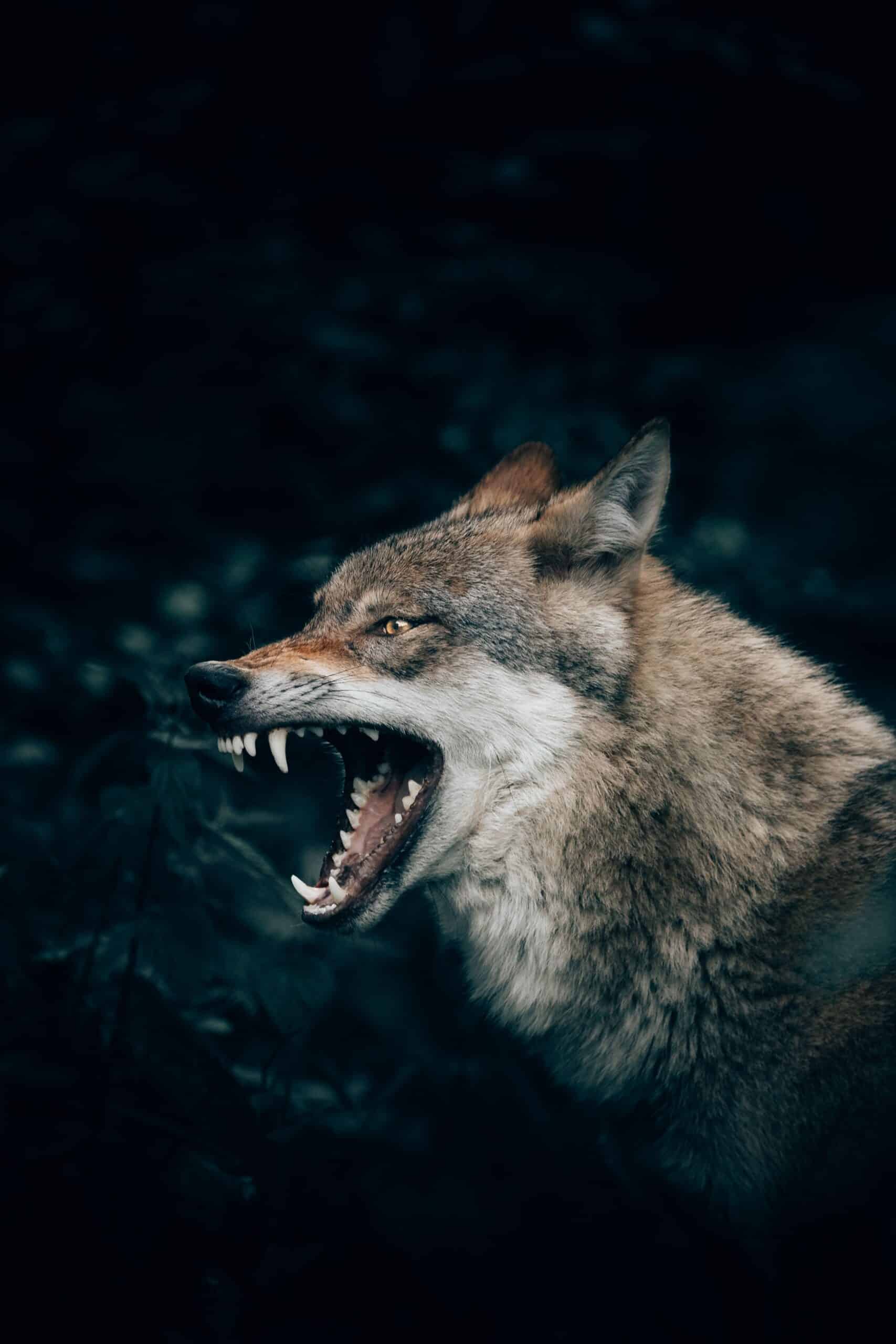 Far-right figures within the countermovement are usually delighted, and immediately rally behind the wolf. The reason? “Wild” prevails over “tamed”.
Far-right figures within the countermovement are usually delighted, and immediately rally behind the wolf. The reason? “Wild” prevails over “tamed”.© Philipp Pilz / Unsplash
Far-right figures within the countermovement are usually delighted, and immediately rally behind the wolf. The reason? “Wild” prevails over “tamed”. That dichotomy, too, is part of a conspiracy theory that developed after The Great Reset. This is a proposal by the World Economic Forum (WEF) to sustainably rebuild the global economy after the corona pandemic. Among the anti-movements, that plan has mutated into a conspiracy in which secret elites, such as the supposed New World Order, would transform the world’s population into sheeple, a contraction of sheep and people: subjugated people with a herd instinct who follow the elite without question. So, tamed.
But the wolf does not follow, he strikes unexpectedly in a united front. That’s also what the far right wants: to reappear on the scene suddenly and awesomely. Little by little, its following would then grow, and the whole of European territory would be regained. In a predatory and fearless manner.




